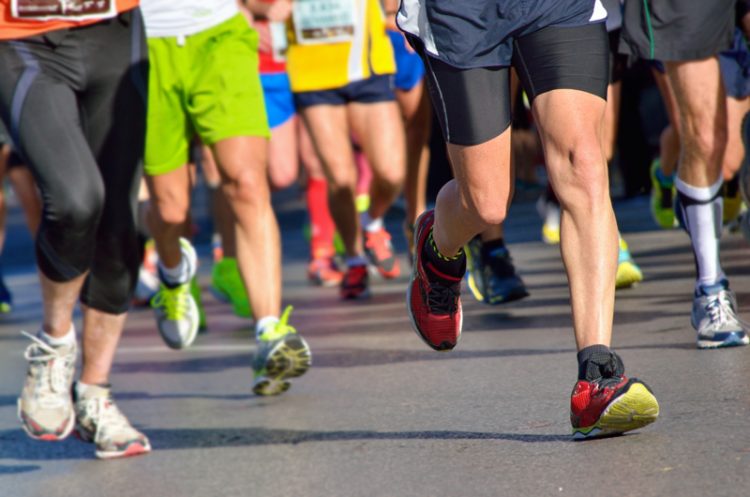By Geoff Lecovin
Adverse gastrointestinal (GI) complaints, such as cramps, nausea, vomiting and diarrhea are common problems faced by up to 90% of endurance athletes. Exercise-related gastrointestinal symptoms are inconvenient, can adversely affect performance and in some cases, may have long-term health consequences.
Causes of exercise-induced gastrointestinal complaints are multifactorial and can include:
- Decreased GI perfusion
- Changes in motility
- Increased permeability and decreased nutrient absorption
- Mechanical factors
- Nutritional factors
- NSAIDs
- Hyperthermia
- Dehydration
(De Oliveira, E. P. et al. 2014)
Decreased Perfusion to the Gut
Hypoperfusion (reduced blood flow) of the gut during exercise can range from mild circulatory changes to ischemia. The consequences of hypoperfusion include injury to the cell lining, decreased gastrointestinal permeability and epithelial cell barrier dysfunction.
Strenuous exercise causes the release of catecholamines from the sympathetic nervous system, inducing splanchnic (visceral) vasoconstriction, while, at the same time, shunting circulation to other tissues, such as the heart, lungs, muscles, and skin, in order to meet the needs of exercise. The shunting of blood from the viscera to the active tissues can lead to gut mucosal ischemia, increased mucosal permeability and in turn cause nausea, vomiting, abdominal pain and diarrhea.
(van Wijck, K., et al. 2012)
Changes in Motility
Heavy exercise can induce changes in motility throughout the intestinal tract resulting in decreased peristalsis, decreased lower esophageal sphincter tone and increased transient lower sphincter relaxation. These changes have been linked to gastroesophageal reflux during exercise and can adversely affect gastric emptying.
(De Oliveira, E. P. et al. 2014) (Strid, H., et al. 2011)
Absorption and Gut Permeability
High intensity exercise compromises intestinal blood flow and can lead to increased intestinal permeability, gut damage, impaired gut function and decreased nutrient absorption.
Gut mucosal damage can also result in a dysbiotic microbacterial environment with the invasion of pathogenic bacteria and their endotoxins into the blood circulation.
(Øktedalen, O. et al. 1992) (Pals, K. L. et al. 1997)
Mechanical Causes
Mechanical causes of gastrointestinal problems have been correlated to posture. This is commonly observed in runners and cyclists and believed to be the result of the repetitive high-impact mechanics and postures that result in damage to the intestinal lining.
Repetitive gastric perturbations can contribute to gastrointestinal symptoms such as flatulence, diarrhea, and urgency. In addition, poor posture and biomechanics can lead to gastrointestinal symptoms due to increased pressure on the abdomen.
Aerophagia (swallowing air) due to increased respiration while concurrently drinking from water bottles can also result in stomach distress.
(De Oliveira et al. 2009) (De Oliveira, E. P. et al. 2014)
Nutritional Causes
Nutrition strongly influences gastrointestinal distress. Fiber, fat, protein and fructose can all cause gastrointestinal symptoms.
Dehydration and inadequate fluid intake can also exacerbate digestive symptoms.
Gastrointestinal complaints during endurance events are more likely to occur with the ingestion of fiber, fat, protein, and concentrated carbohydrate solutions (beverages with high osmolalities >500 mOsm/L). These foods delay gastric emptying causing a shift of fluids into the intestinal lumen.
Beverages containing multiple transportable carbohydrates (e.g., glucose and fructose) reduce the likelihood of developing gastrointestinal symptoms.
(De Oliveira, E. P. et al. 2014)
Training the Gut
Conditioning or training the gut can be a strategy to reduce gastrointestinal distress, by helping athletes to get more accustomed to fluid and food ingestion during exercise.
Training the gut can help to improve nutrient absorption and improve tolerance to fluids and foods during exercise, thereby reducing the chances of gastrointestinal distress.
(Murray, R. 2006)
Non-Steroidal Anti-Inflammatory Drugs
Many athletes use anti-inflammatory medications (NSAIDs) to relieve or prevent pain. The use of NSAIDs has been associated with numerous gastrointestinal complications, including mucosal bleeding, or perforation, increased gastrointestinal permeability, gut barrier dysfunction and gastrointestinal symptoms as those previously mentioned.
(Hirschowitz, B. I. 1996) (Van Wijck, K. et al. 2012)
Hyperthermia
Heat exposure during exercise can lead to intestinal ischemia due to shunting of the blood from the viscera to the skin and muscles. Intestinal ischemia increases capillary permeability and can lead to mucosal lesions and hypoxia. In addition, the rise in capillary permeability has been attributed to the production of free radicals.
Heat acclimatization and maintaining optimal hydration can help mitigate or prevent some of the negative consequence of hyperthermia.
(Lambert, G. P. 2004)
Blood flow to the gut and liver is reduced during exercise up to 80%. Decreased splanchnic blood flow and oxygen supply adversely affects nutrient absorption, motility and the mucosal integrity of the GI tract, resulting in GI complaints.
GI symptoms occur more often during competition in a warm environment due to the combination of systemic dehydration and lower plasma volume.
(Gisolfi, C. V. 2000) (Ter Steege, R. W. F. 2012)
Practical Guidelines:
- Avoid high-fiber foods the day of competition and for several days leading up to the event
- Identify and avoid food intolerances and sensitivities (e.g., dairy, gluten, etc.)
- Avoid sugar alcohols (e.g. sorbitol, mannitol, xylitol)
- Avoid NSAIDs such as Ibuprofen
- Avoid high-fructose foods. A fructose and glucose combination may be better tolerated
- Avoid dehydration- prevention is the key
- Ingest carbohydrates with sufficient water
- If you opt for carbohydrate drinks, choose products with lower carbohydrate concentrations in order to prevent very high concentrations and osmolalities in the stomach
- Practice new nutrition strategies before the race day to identify what works for you

